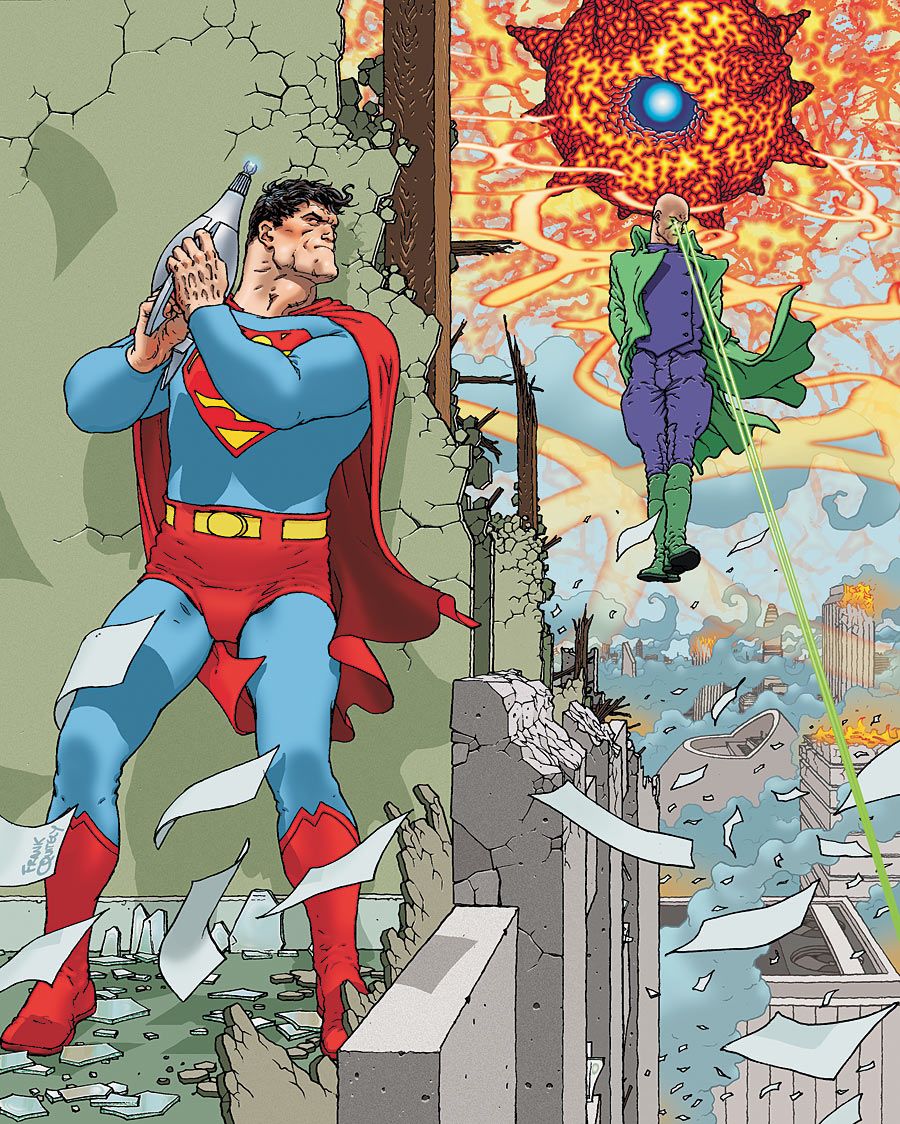I think that when the first issue of “All Star Superman” arrived, those many years ago, few had any doubt that a self-contained, out of continuity Superman story by Grant Morrison and Frank Quitely would end up being a superlative one. No anchors to past stories, just an examination of the fundamentals of the mythos, artfully and imaginatively rendered. We all knew it was going to be good.
Not really 100% sure we knew it was going to be this good or even, quite possibly, the perfect Superman comic, now that it’s all said and done.
That being said, #12 is not the best issue of the comic. That would be #10. But it maintains the extravagantly high bar of quality laid down by the rest of the series and ends it in remarkable and poignant fashion.
As a single issue, however, like all the ones before it (except for that one two parter), “Superman Excelsis,” it tells a very specific and concise story, while of course bringing the entire saga to its close. The opening pages describe in great detail just how fundamentally alone Kal-El is as a Kryptonian and just how little is left of his culture and its history. It ends with his presence on Earth fundamentally transfiguring it and causing his adopted race, human kind, to reach its ultimate, and previously unimagined, potential. It illustrates his journey from orphan to, pun intended and quite literally, adopted son.
It’s a fitting thematic conclusion to a series that, even with its high concept of Superman’s 12 Labors, was all about his integration with the family he built himself, out of circumstance. The parents who found him. His schoolmates. The people he worked with. As much as he worked to save and protect the entire population of the planet, he also worked tirelessly to enlighten the lives of those closest to him. This story followed his companionships with Lois Lane, with Jimmy Olsen, with Bizarro, even with Lex Luthor for one very inspired issue. And so, when Superman uses his last reserves of energy, and actually cheats the death we saw last issue, all to rescue his adopted world from yet another dying sun; to keep all of humanity from suffering Krypton’s fate; all with his bare hands, the act resonates because Morrison and Quitely have spent so much time and exacted so much detail showing how Superman really feels about the people he cares about, and the direct influence that their humanity has had on him.
One of the critical contributors to “All Star Superman’s” landmark success is of course the work of Frank Quitely and digital inker and colorist Jamie Grant. As immediately impressive as Quitely’s work is, Grant is just as strong a factor in the book’s artistic accomplishment, if a bit more subtly impactful. The colors of this book, throughout the series, have added a dayglow pop to the culture of Krypton and an unmistakable concreteness to the city of Metropolis and its inhabitants. Quitely gets most of the press, art-wise, but Grant’s work is just as critical to making this book so visually staggering.
Frank Quitely is, however, something uniquely special. Across the spectrum of sequential art, whether it’s character design, posture, perspective, detail, settings, or panel-to-panel storytelling, I’d be personally hard pressed to find someone whose work is as breathtakingly accomplished. It’s rare for an artist to be so skilled in creating a living and detailed world within the confines of a single panel, and then also be able to so adroitly tell a story in motion between two of them. There’s a remarkable page in which Luthor drags Superman into the subway tunnels and punches him into a traincar that illustrates this complete dominance of all aspects of comic art perfectly. Each panel is overflowing with detail; shattering glass, expressive characters, crumbling rubble. But when you look at how that detail lends itself to the storytelling, the page becomes even more impressive. The tiny shocked train conductor in panel two has been sent flying, nearly entirely out of panel three, but we see, almost lost in the concrete and glass, his horn rimmed glasses floating in the air. And the 1-2-3 rhythm of Luthor’s punch from the first panel to third is a textbook perfect example of using posture to convey the rhythm of panel-to-panel storytelling.
And there are pages and pages of this kind of thing throughout both this issue and the eleven that came before it.
Quitely has said that when it came to this book, he simply drew what was in the script (one panel description of the Kandor we saw in issue 10 was purported to span five pages), and so we must give equal commendation to Grant Morrison, of course, for how successful this book has been at telling a story. The collaboration between these two creators has led to fantastic comics for a long time now, each one more impressive than the last. As groundbreaking as their work on “New X-Men” and “We3” might have been, “All Star Superman” raises the bar yet again. Existing in its own glass bubble of continuity (while making reference to any number of previous Morrison DCU comics), Morrison and Quitely told what is in many ways the ultimate Superman story. It shows us what he stands for in every moral degree. It shows us the world he fights for in every level of detail. It is an exacting, inspiring, and poignant accomplishment in the realm of Superhero comics. Almost fable-like in its directness and simplicity at times, but as emotionally in depth as any contemporary work of literary fiction. “All Star Superman” is, in its primary intent, “just” a Superhero comic. But like its subject, it has landed in a medium not completely prepared for how remarkable it could be, and thus has irrevocably changed it for the better.

